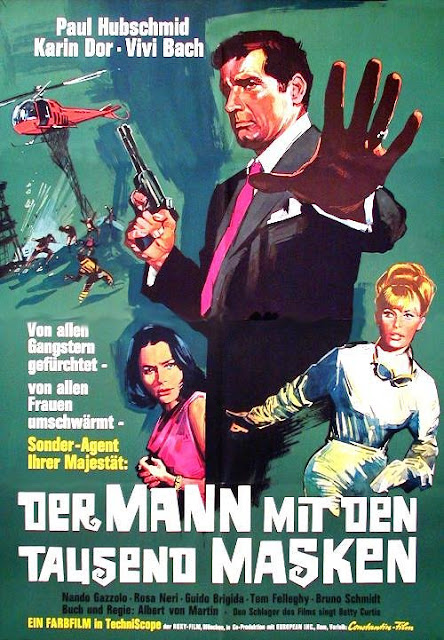PHENOMENALITY: *marvelous*
MYTHICITY: (1) *fair,* (2) *poor*
FRYEAN MYTHOS: *comedy*
CAMPBELLIAN FUNCTION: *sociological*
I've seen the most famous works of writer-director Herschel Gordon Lewis, and 2000 MANIACS is the only one I like.
Like other Lewis movies, MANIACS is mainly about placing helpless victims into the hands of deranged madmen, who proceed to maim or murder said victims. But most of them are mean-spirited even for gore horror films, and don't provide much feeling for any of the characters. MANIACS is at least partly helped by having been filmed in a real Florida town, standing in for the fictional Pleasant Valley, Georgia. Though most of the performers were amateurs, Lewis came up with much better visual setups even for the non-gore scenes. Further, the use of jocular country music increased the sense of the absurd, which is the main reason I view MANIACS as a covert comedy, showing much in common with the more playful EC horror comics.
Six tourists, all from Northern states, are driving in Georgia, mostly on sightseeing tours. The inhabitants of Pleasant Valley use road detours to draw the visitors into their town and persuade the "Yankees" to join their centennial celebration. However, all of the inhabitants, despite their appearance of mundane solidity, are the ghosts of Southerners massacred a hundred years ago by renegade Yankee soldiers. Now, it's their turn for a massacre, as the ghosts utilize various torture devices to execute the innocent Northerners-- my favorite being "the barrel roll."
Only two victims escape the chaos, who by an odd coincidence are the only two "names" in the cast. One is the oft-seen William Kerwin, though here he acted under another name. The other is Connie Mason, made infamous for the "tongue scene" in BLOOD FEAST, but though her character gets to live this time, Mason never scored any major roles in mainstream entertainment. The best performance, though, is that of the Foghorn Leghorn-like town mayor, billed as Jeffrey Allen, who appeared in three other Lewis films. When the escapees bring the law to examine the area, the town and its denizens have all vanished. But there's a funny coda in which two of the hicks, about to go "to sleep," wonder what will happen in the next centennial, when everyone has "rocket ships."
However, as if to keep up Lewis' rep for mean-spirited movies, a 2005 production, headed by director/co-writer Tim Sullivan, apparently strove to emulate the worst qualities of both Lewis films and of teen-slashers.
I suppose 2001 could have been worse. Instead of just a small handful of Southerner jokes with a heavy dose of righteous anti-racism, the whole film could have been dominated by that sort of material. But what Sullivan and his crew produced is just one predictable sequence of gore, grotesque sex scenes, and driveling dialogue, as eight victims are lured into modern-day Pleasant Valley. I mean, I like some over-the-top gory horror, but next to Sullivan Rob Zombie is a model of subtlety.
All of the actors are depressingly one-note, even taking into account the boring dialogue. Only top-billed Robert Englund, playing the fulsome mayor of Pleasant Valley, acquits himself reasonably well, but the cartoony nature of the role is underlined by the fact that the mayor wears an eyepatch with the image of the Stars and Bars on it. This time the ghosts are cannibals as well as killers, and they come out of Ghostville every ten years instead of every century, but none of Sullivan's additions have any impact. He even dilutes the "South vs. North" idea further by having one of the idiot youths be a Georgia native.
I'd judge 2001 to be a sloppy horror-comedy just as 2000 is a reasonably restrained one.

















